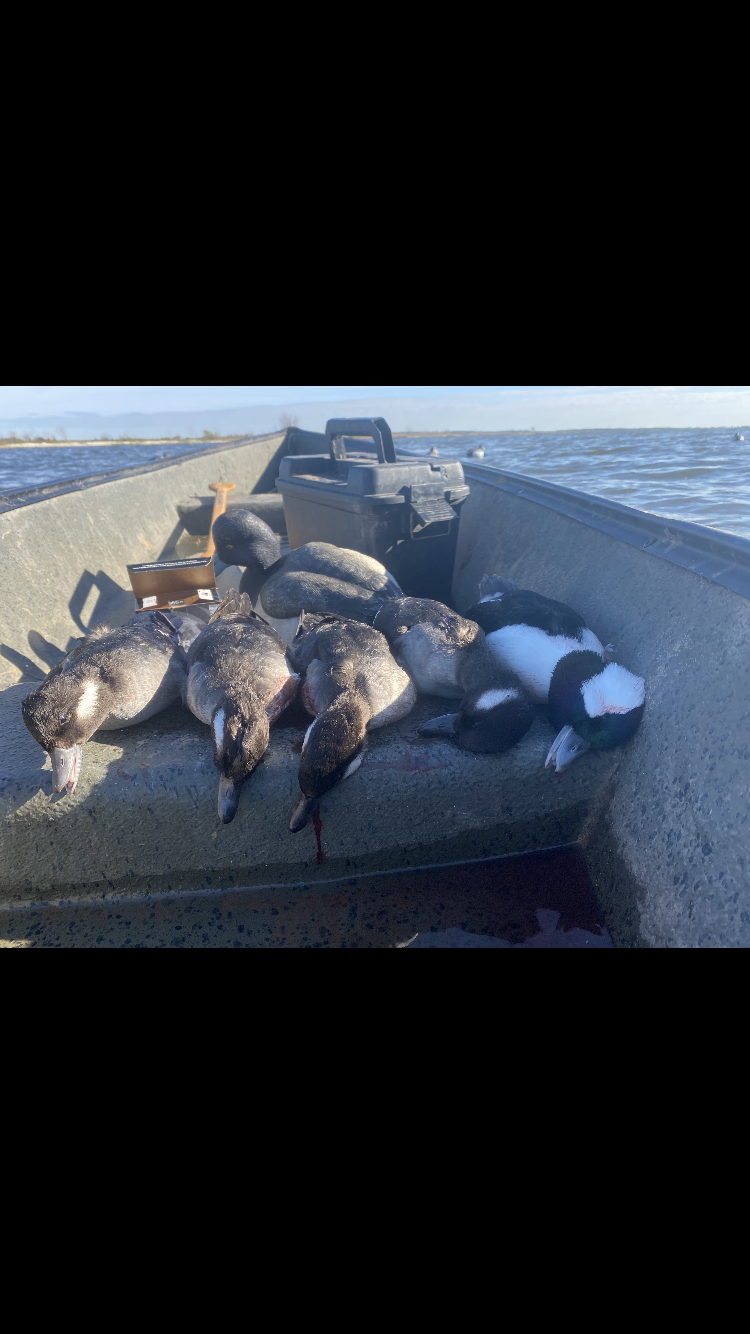Divers in the Deep South
A lesson on the winds of change, hiding in plain sight, and what should be the world’s smallest duck.
My hands were already soaked by the time the last decoy hit the water, but I didn’t mind. Despite the temperature being in the low 40s, and the wind kicking around 15 in my face, I was inundated with sweat. The sand that I trudged through for eight-tenths of a mile had my thighs burning, my breathing labored from hauling a pirogue with six dozen decoys, gun, gun box and a four-foot wide plywood scaup that I used to hide behind.
There was no real plan for the morning; throw the biggest, whitest decoys I had out as far in front of us as we could while still being able to pick them up, but besides that, the decoy spread just naturally formed itself around our stickups. There were canvasbacks, redheads, buffleheads and scaup all mixed into our blocks. There were even a few goldeneye as well, at the behest of a biologist that told us in passing that they had been using the lake we were hunting.
I set my gun up the rack I fashioned on the back of the scaup stickup, which was aptly named Mega Dogris from a few friends that thought I better belonged on an episode of Jackass than I did in a duck blind. So, when the first flock of birds hit the deck at 500 yards and decoyed as the first wisps of sunrise peeked over the rolling waves, I felt vindicated. So vindicated, in fact, that I completely forgot to scan the flock of buffleheads for any stud drakes, instead folding a hen while her beau trailed some 10 yards behind.
It wasn’t my first bufflehead, but it might’ve as well have been; The one bird I recall harvesting came from the same area three or four years prior, maybe 2017. The look on the game warden’s face as he checked my bag back then told me all I needed to know: They just weren’t seen everyday. So naturally, I reveled in the five buffleheads I laid low that morning. Nevermind that, after four years of hunting this spot, we’ve killed buffleheads and only buffleheads with three exceptions: A handsome ringneck that floated into the spread all by his lonesome; A wood duck that was picked out of a passing flock, and a drake scaup that sat down in the decoys in the middle of a storm.
It was a far cry from the painted scenes of scaup and canvasbacks decoying into long lines as waves swell underneath; The most scenic thing about this blind was the wrecked sailboat that probably broke loose from its mooring in Hurricane Ida (side note: I’ve seen several flocks of buffleheads and scaup raft up around that sailboat, and an attempt to hunt it is inevitable) and the occasional kitchen appliance that would wash ashore from the same catastrophic weather events.
The change of scenery made me feel like I was starting am new as a duck hunter, that I had to start at square one to earn my keep in the world of diving ducks. I had to learn how to attract them, if they could be called, how to properly dispatch them on the water and how the wind direction affected their flight for the day. After the hunt, I had to learn how to cook them as well, the sign of a true venison chef. Admittedly, I’m not the caliber of chef to make a bufflehead acceptable for the average palate, but for anyone with an acquired taste for wild game, I serve’em up just fine.
It’s almost a different world, hunting divers. If hunting puddle ducks - or the “good ducks” as so many of a certain generation would say - is the golden child at Christmas dinner, shooting divers is the drunk uncle with a pocket full of roman candles. There’s a little bit of chaos that sits within a diver hunter - who is usually the type of person you wouldn’t want to confront at the boat launch - spurred on from the insatiable need to find birds in the most inhospitable conditions possible. Where the puddle duck hunter could hunker down in a blind on a cold, blustery morning, the head of a diver hunter sits just inches above the water, drifting with the swells in a layout boat waiting on the next push of birds to come through. When the winds become too strong and the sea duck hunters come to their senses, those after after scaup, redheads and canvasbacks forge ahead, often times changing their plan for the morning but refusing to sacrifice their end goal: Hunt ducks, for what little time we have to hunt them.
Of course, the diver hunting I’m doing is a far cry from the truest of blues. There’s little in the way of canvasbacks and redheads, at least in the spots I’m targeting divers. There’s no drive in me to battle winds more than 15 miles per hour, or leave the confines of propane heater and duck blind to shoot ducks, though I’m curious as to how much adrenaline my body could push through my veins at the sight of canvasbacks crashing down so close to me that the displaced water from their splashes rains down on me.
Now that I think about it, stretching these old legs out in a layout boat doesn’t sound half bad.


